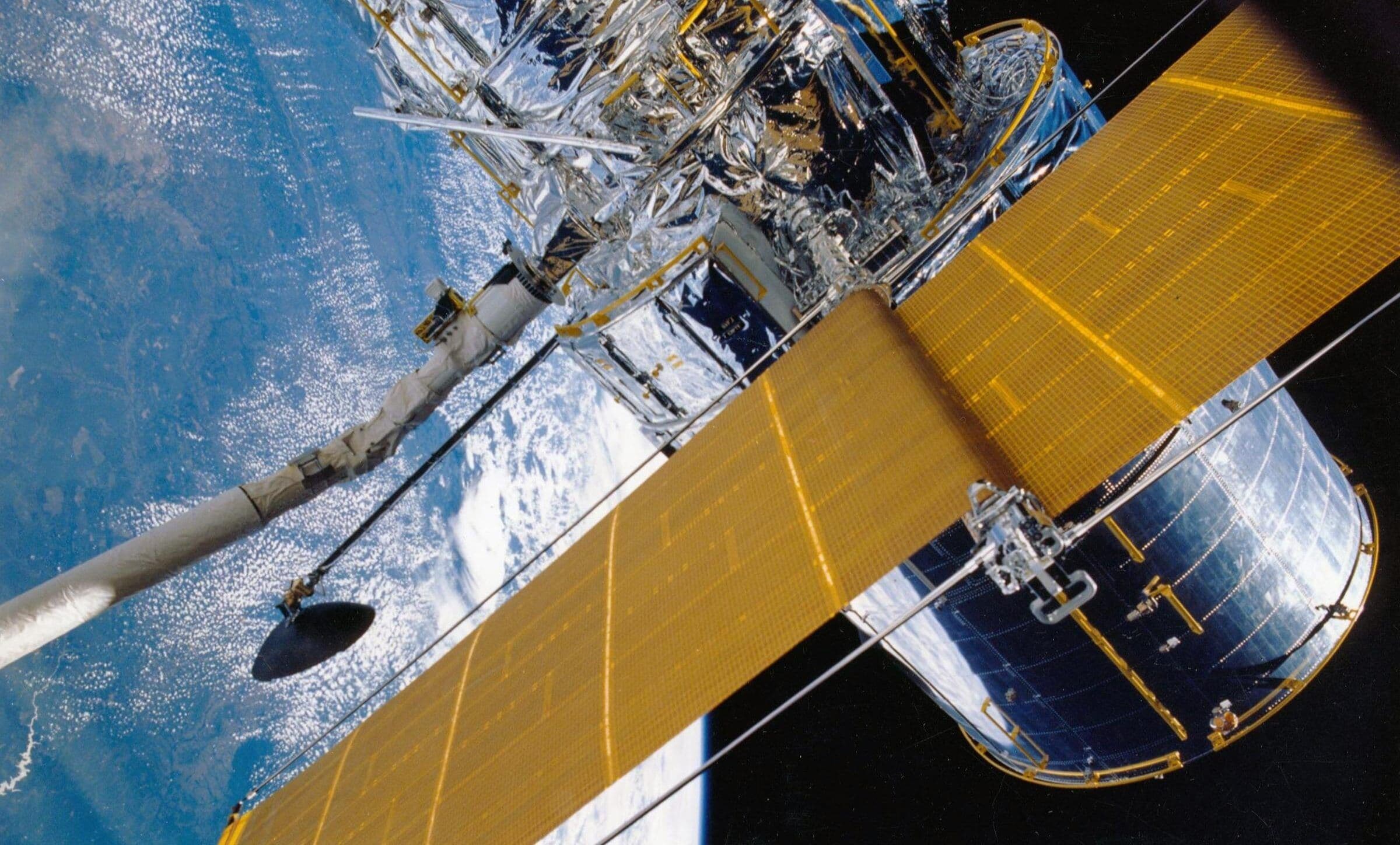GPS technology is all around us, in cars, smartphones, tracked packages, and more. But how does the technology work, and where did it come from? Is it really free to use, and if so, why? We’ve tackled all these questions, and more, with this comprehensive GPS FAQ guide.
1. What does GPS stand for?
GPS stands for Global Positioning System. It’s a system that uses satellite and radio technology to determine the position of GPS receivers located anywhere on the planet. The technology was developed based on satellite navigation experiments conducted by the U.S. in the 1960s. In 1978, the U.S. Department of Defense launched a network of satellites to advance the system for the military. A program of “Selective Availability” eventually ended in 2000, making GPS fully available to civilians for personal and commercial use.
Check out our recent blog on the history of GPS for a more detailed overview.
2. Who invented GPS?
The invention of GPS is often credited to Roger L. Easton, Ivan A. Getting, and Bradford Parkinson. Dr. Gladys West’s computational work was also instrumental to the technology. Easton was a scientist and creator of the U.S. Naval Space Surveillance System, which played a crucial step in the development of GPS. Getting was the founding president of The Aerospace Corporation, and pressed for an advanced system of satellites that could track rapidly moving vehicles. Parkinson contributed to GPS as the first manager of the NAVSTAR GPS program. As an Air Force colonel, he met the challenge of combining existing discoveries and technologies to create a functioning system. Dr. West, a mathematician who worked in the Naval Weapons Laboratory, made critical calculations that made it possible to determine the exact location of satellites and ensure GPS accuracy.
3. Why is GPS free?
At first, the U.S. military wanted to restrict access to GPS for security reasons. In 1983, however, the Soviet Union shot down a Korean passenger jet that strayed from its intended route. The mistake could have been avoided with GPS. President Ronald Reagan opened the system to the public with reduced accuracy in a program called Selective Availability. President Bill Clinton ended Selective Availability in 2000. Full, free access to GPS technology allowed for innovations like real-time, turn-by-turn driving directions, GPS tracking for packages, geofencing, and more. These advances have increased safety and fueled productivity and economic growth in the U.S. and abroad.
4. How does GPS Work?
The key to GPS is trilateration: using the distance of three or more satellites to calculate location. In Satellite Navigation – GPS – How It Works, the Federal Aviation Administration explains that GPS receivers “determine their location by computing the difference between the time that a [satellite] signal is sent and the time it is received.” GPS receivers, such as smartphones and navigation hardware, use this data to determine the satellite’s location and how far away it is. Data from one satellite narrows a receiver’s possible location down to a radius on Earth within that distance. A second satellite provides enough information to further narrow the possibilities. A third makes trilateration—determining one exact location—possible.
5. How do GPS satellites work?
GPS satellites work mostly by transmitting data from atomic clocks. There are 30+ GPS satellites orbiting Earth. These satellites constantly emit radio signals that broadcast the location of the satellite and the time each signal was sent. This allows receivers to calculate their own location based on how long it takes the signal to reach them. Atomic clocks are too expensive to put in every GPS receiver, making it difficult to sync them with satellites. To make up for this, GPS receivers constantly reset their clocks to match time data sent by multiple satellites. Thus, GPS satellites work and maintain the system by simultaneously delivering time information from their atomic clocks.
6. How do GPS trackers work?
GPS trackers contain both GPS receivers and data loggers and/or transmitters. Data loggers make it possible to see where a tracker has been according to GPS. Data transmitters make it possible to track the real-time location and movements of a GPS tracker. An example of a GPS tracker using a data logger is a digital camera. Photos can be geo-tagged with the location they were taken. Data transmitters are more common for GPS tracking of packages, assets, and vehicles in motion.
7. How does GPS work with cell phones?
While GPS transmits radio signals via satellites, cell phones use radio towers. These technologies can be combined in something called wireless-assisted GPS or enhanced GPS. Enhanced GPS makes it possible to determine a receiver’s location more quickly. Data about how far a phone is from nearby cell towers is added to data from GPS satellites. Most smartphones today have GPS ability and a data plan that supports transmission of maps and GPS data. This makes it possible to get turn-by-turn directions or track the whereabouts of a cell phone.
8. Can I use GPS without data?
GPS does not require a cellular connection to work. In fact, the technology is very popular for activities in remote locations where cellular data is scarce or nonexistent. That being said, latitude, longitude, and altitude are rarely useful for the average user. To get the full benefits of GPS, you’ll need to download apps and maps ahead of time that can translate GPS signals into the information you need.
9. Does GPS work without Wi-Fi?
Yes, GPS works without Wi-Fi. However, there is a caveat. Many GPS devices like navigation systems, trackers, and smart watches have built-in technology that overlay a user’s GPS location on a map. Without these maps, most people will have trouble getting the most use out of GPS. For this reason, if you plan on using GPS on a smartphone or similar device, you should download maps and apps that can be used offline with GPS.
10. Does 5G interfere with GPS?
Under certain circumstances, 5G could potentially interfere with GPS. In April 2020, the FCC approved an application from a company called Ligado Networks to deploy 5G in a manner that may interfere with GPS. According to GPS.gov’s Ligado Networks and GPS page, there is concern that Ligado’s “proposed transmission power exceeds the thresholds established by the GPS Adjacent Band Compatibility study to protect GPS users from harmful interference.” Ligado wants to deploy a low-power, high-traffic 5G network on a radio band adjacent to GPS bands. The amount of traffic on the 5G network could drown out GPS radio signals and cause the technology to fail.
11. Who owns and operates the GPS satellites?
GPS is owned by the U.S. Government and maintained by the United States Air Force. Though it is paid for by U.S. taxpayers it is accessible by citizens of any country globally. There are other countries currently developing competing systems.
12. What are some other uses for GPS technology?
- Detecting earthquakes
- Tracking the migration of animals.
- Surveying land boundaries and sea floors.
- Numerous military applications such as missiles trajectories.
And much more.
1. What does GPS stand for?
GPS stands for Global Positioning System. It’s a system that uses satellite and radio technology to determine the position of GPS receivers located anywhere on the planet1.
2. How does GPS work?
GPS works by using a network of at least 24 satellites orbiting the Earth at an altitude of about 20,000 km (12,000 miles). Each satellite broadcasts a unique signal and orbital parameters that allow GPS receivers to decode and compute the precise location of the satellite1.
GPS receivers use this information and trilateration to calculate their own exact location. Trilateration is a mathematical technique that involves measuring the distance to three or more known points (in this case, satellites) by using the time it takes for their signals to reach the receiver1.
With distance measurements from four or more satellites, the receiver can determine its position in three dimensions: latitude (north-south), longitude (east-west), and altitude (height above sea level)1.
3. Who owns and operates GPS?
GPS was originally developed by the U.S. Department of Defense (DoD) for military purposes in the 1970s. The first satellite was launched in 1978 and the system became fully operational in 19952.
Since then, GPS has been made available for civilian use as well as military use. The U.S. Air Force maintains and operates the GPS satellites
- and provides the signals free of charge to anyone with a GPS receiver.
- The U.S. government also cooperates with other countries and organizations that operate or plan to operate their own satellite navigation systems, such as the European Union’s Galileo, Russia’s GLONASS, China’s BeiDou, and India’s NavIC.
4. How accurate is GPS?
The accuracy of GPS depends on several factors, such as the quality of the receiver, the number and location of the satellites in view, the atmospheric conditions, and the signal interference or obstruction.
Generally speaking, most civilian GPS receivers can achieve an accuracy of about 15 meters (49 feet) under ideal conditions. However, newer receivers that can use both the original L1 frequency and the newer L5 frequency can achieve an accuracy of about 3 meters (10 feet) or better.
Some GPS receivers can also use augmentation systems that provide additional information or corrections to improve the accuracy. For example, WAAS (Wide Area Augmentation System) is a network of ground stations and satellites that covers most of North America and can improve the accuracy to about 1 meter (3 feet) or better.
5. Is GPS free to use?
Yes, GPS is free to use for anyone who has a compatible receiver. The U.S. government does not charge any fees or require any licenses for using GPS signals.
However, some GPS devices or applications may require a subscription or a purchase fee for accessing additional features or services, such as maps, traffic updates, voice guidance
- voice guidance, or live tracking. These fees are charged by the device or app providers, not by the GPS system.
6. What are some common uses of GPS?
GPS has many applications across various domains and industries. Some of the most common uses of GPS include:
- Navigation: GPS can help people find their way from one place to another, whether by car, bike, foot, or public transportation. GPS can also provide information such as distance, time, speed, direction, traffic conditions, and points of interest along the way.
- Tracking: GPS can help people monitor the location and movement of people, animals, vehicles, or objects. For example, GPS can help parents keep track of their children or pets; businesses keep track of their fleets or assets; athletes keep track of their performance; or researchers keep track of wildlife or environmental phenomena.
- Mapping: GPS can help people create and update maps of various areas and features. For example, GPS can help surveyors measure land boundaries; cartographers draw accurate maps; geographers study spatial patterns; or travelers share their experiences.


